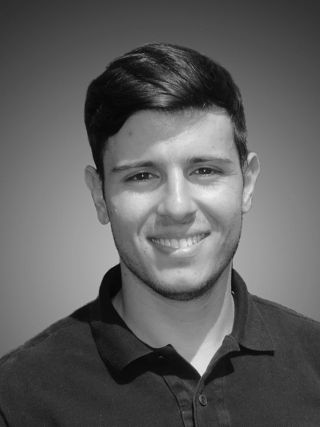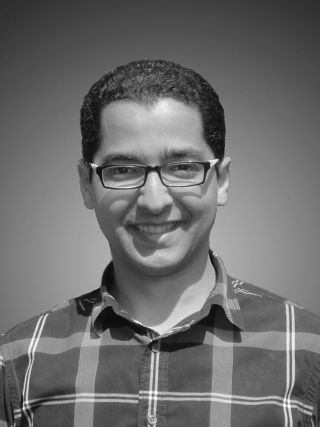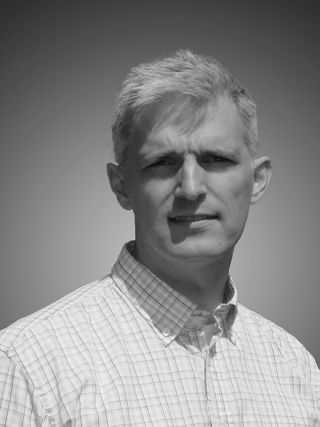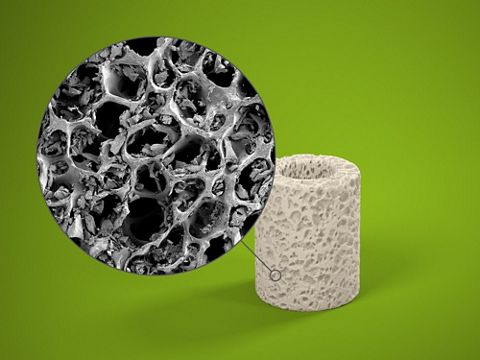Guided Surgery for Bone Ring Technique
A clinical case report by Vasilios Alevizakos, Ahmed Mohamed Othman, Constantin von See, Austria
In totally and partially edentulous patients, implant placement and alveolar bone augmentation is a treatment that is considered to be very feasible and predictable in prosthetic rehabilitation1. Good clinical prognosis is due to the use not only of new materials but also of new technology, which aids the surgeon in providing the most accurate and precise treatment. The implant template is considered to be of clinical
If vertical, horizontal or combined alveolar bone ridge augmentation is indicated, different methods with varying rates of success and degrees of difficulty have been established9-14. The bone ring augmentation method is relatively easy to
Initial situation
A patient with a missing tooth in the anterior area (#11) came to the clinic complaining of the negative esthetic impact of this gap (Fig. 1). Accordingly, he requested a fixed esthetic restoration. Preoperative CBCT images revealed vertical bone loss and a buccal wall defect (Fig. 2).
Treatment planning
As the case was esthetically challenging, a surgical template was used to ensure correct implant position and angulation. Firstly, a virtual model of the botiss maxgraft® bonering was preoperatively designed using implant planning software and placed in the desired position in order to simulate the postoperative position of the implant (Figs. 3-4). Yet the preoperatively planned position of the bone ring still has to be accurately transferred into the clinical situation, so a template was manufactured to enable guided trephine drilling. Just as the implant can be positioned preoperatively, so it can be placed in a predictable fashion during surgery through the bone ring into the alveolar bone using the template.
Adequate preparation of the soft tissue before bone ridge augmentation is an important step before implantation. Therefore, a 3D collagen matrix (mucoderm®, botiss biomaterials GmbH, Zossen, Germany) was placed to ensure there was sufficient soft tissue to cover the subsequent ridge augmentation and then design the emergence profile around the implant (Fig. 5).
After soft tissue augmentation with mucoderm®, a healing period of 4 weeks was given in order to gain sufficient soft tissue (Fig. 6).
As part of the planning process, the specific size of the bone ring had to be decided on. The maxgraft® bonering 4.1 (botiss biomaterials GmbH) was chosen, because an implant with a diameter of 4.1 mm (Straumann® Bone Level Implant Roxolid® SLActive®) had been selected to esthetically restore the missing tooth. Accordingly, the implant template was then designed and manufactured for accurate surgery (Figs. 3-4, 10).
Surgical procedure
Under local anesthesia (Septanest 1: 100 000, Septodont, Niederkassel, Germany) a mid-crestal incision on the alveolar ridge of tooth 11 was performed, along with an intrasulcular incision along tooth 21 and a vertical incision distal to tooth 13 (Fig. 7). Additionally, a mucoperiosteal flap was raised buccally and palatally using a piezo-driven raspatory instrument (PR1, Piezosurgery®, Mectron, Genoa, Italy) (Figs. 8-9). Next, initial implant drilling was performed using the template, which provided a glide path for the trephine drill that was to follow (maxgraft® bonering surgical kit, botiss biomaterials GmbH) (Figs. 10-11). A guided osteotomy for bone ring placement was prepared using the trephine drill through the surgical template and the planator to create a uniform recipient site (Fig. 12). The bone chips harvested were removed from the trephine and stored in a blood container (Figs. 13-14). The bone graft was adapted to the osteotomy thus prepared and all sharp edges were removed from the bone graft. Before definitively placing the bone ring, it was stored in a blood container (Fig. 14), after which the blood soaked bone ring was positioned into the alveolar ridge and the steps of implant drilling were performed through the inner slot of the maxgraft® bonering (Figs. 15-16).
The implant used in this case report was a Ø 4.1 mm Regular CrossFit® SLActive® 12 mm Roxolid® Bone Level Implant (Straumann®, Basel, Switzerland), which was inserted 7 mm into the residual bone to achieve primary stability (Figs. 17-18). Additional bone ring and implant stability was obtained using a closure and fixation cap (Ø 5.5 mm Regular CrossFit®, Straumann®, Basel, Switzerland) screwed into the implant (Fig. 19). Then, the soft tissue augmented before surgery was used to adequately cover the augmented alveolar bone ridge. The soft tissue was split in the apical direction and folded over the fixation cap to check that the length was sufficient to close the flap without tension (Figs. 20-21). Then, the harvested bone chips were mixed with xenogeneic bone substitute material to fill irregularities.
The xenogeneic material serves as a protection against resorption. A membrane was used to prevent proliferation of soft tissue cells into the bone graft (Fig. 22).
Finally, orthopantomographic control was performed (Fig. 23).
Augmentin 1 g (875 mg amoxicillin, 125 mg clavulanic acid) and Ibuprofen 600 mg were prescribed. The antibiotic was taken twice daily for 7 days, and the analgesic once on the day of surgery and thereafter only in case of pain, but not more than twice daily.
Prosthetic procedure
A healing period of 11 days was allowed for total relief of any surgical symptoms and to give the soft tissue time to heal. Finally, a CADCAM-based long-term provisional crown was placed (Fig. 24).
Conclusion
The surgical technique presented in this case report shows the possibility not only of placing a dental implant using a surgical template but also of performing guided ridge augmentation. In combination with the preoperative CADCAM-based manufacture of a surgical drilling template, surgery can be less time-consuming and more predictable. Additionally, a temporary prosthetic restoration and a better prosthetic fit can be achieved with guided surgery. Ultimately, using the bone ring technique for bone augmentation and implant placement saves the patient from having to undergo a second procedure to place the implants and therefore from having to wait longer for their prosthetic restoration, which results in higher patient satisfaction.



